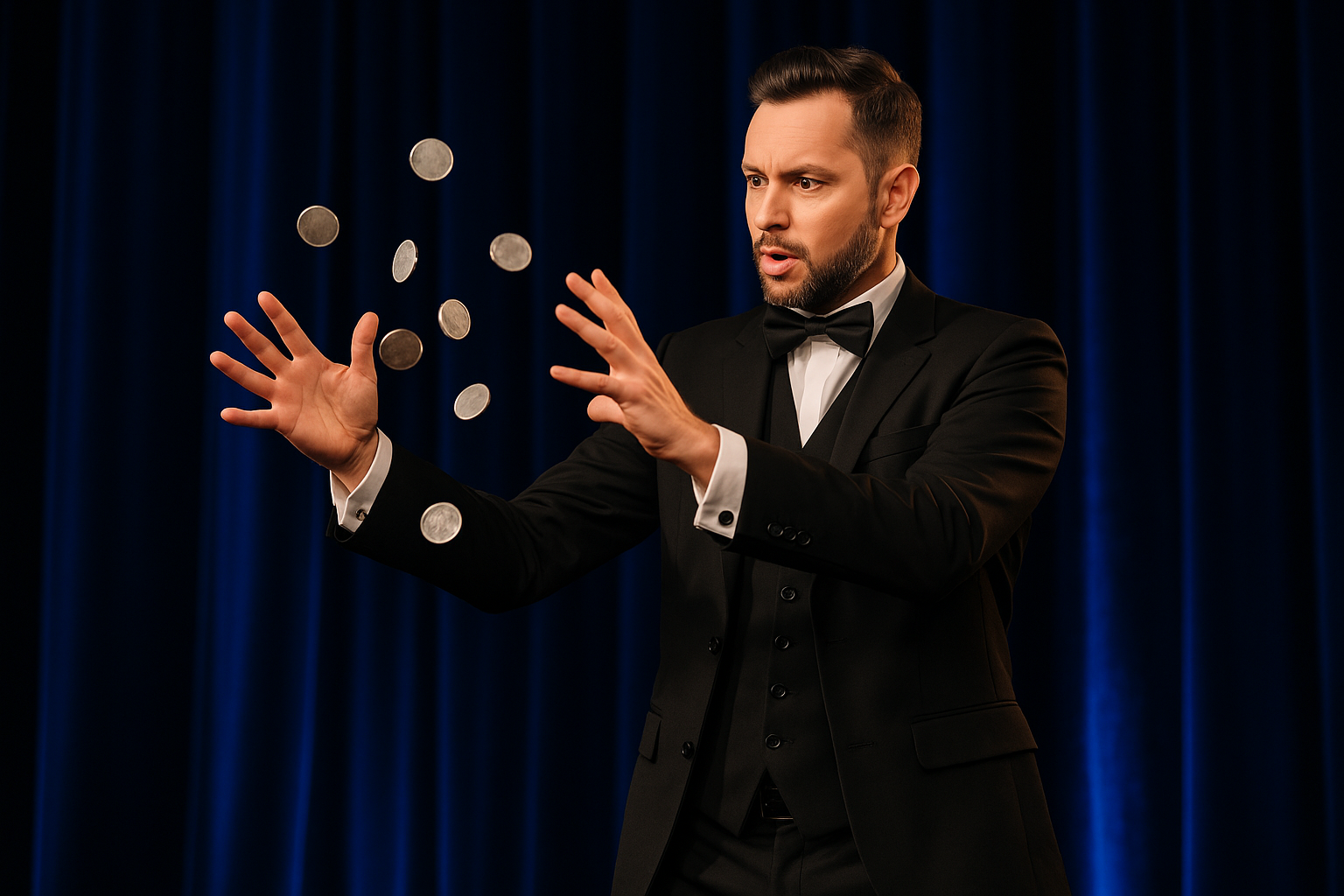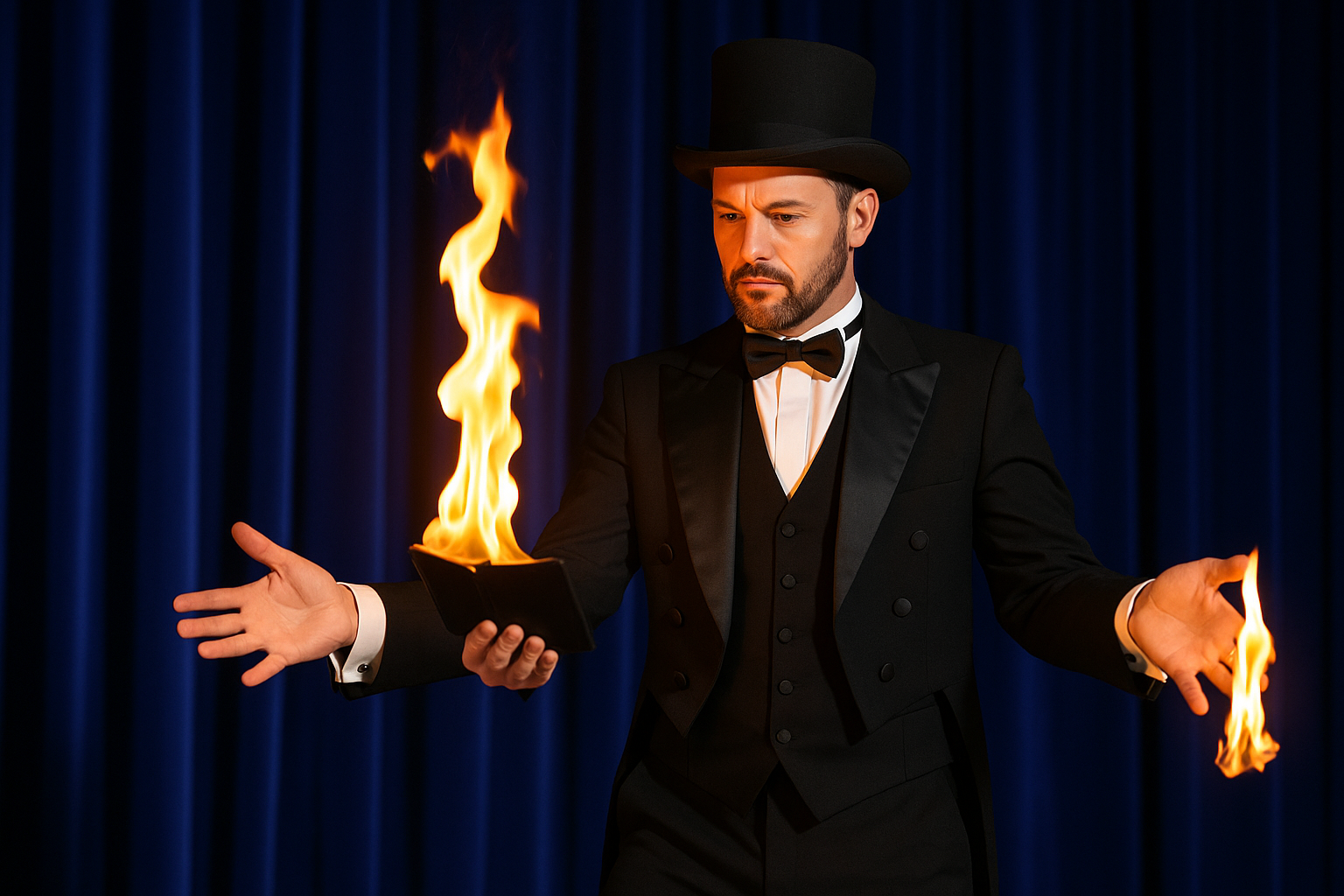How to Do Illusion Tricks That Captivate Any Audience at Your Next Event?
We’ve all seen that one moment, the coin disappears, the crowd gasps, and someone shouts, “How did you do that?” At Omni Magic, we live for those moments. Whether you're entertaining colleagues, surprising a birthday crowd, or planning something special for your next event, knowing how to do illusion tricks can instantly make you the highlight of the room.
In this article, we’re breaking down the art of illusion in a way that’s simple, exciting, and perfect for beginners or anyone who wants to add a bit of magic to their event. With everyday items, a little practice, and some smart performance tips, you’ll learn tricks that feel like they came out of thin air, but are all within your reach.
What Makes Illusion Tricks So Powerful in Front of a Live Audience?
Illusion tricks aren’t just about sleight of hand, they’re about how the brain fills in gaps and misinterprets what it sees. When performing in front of a live audience, the real magic lies in how reality can be bent just enough to make people question what they thought they knew. That’s what makes illusions such a hit at birthday parties, weddings, and corporate events.
Think about the amazement when a coin seems to disappear in thin air, or a ball floats mysteriously in a circle around a magician's palm. It’s not just the trick, it’s the reaction. You have only a few seconds to make that impact, and that’s where illusion truly shines.
How to Do Illusion Tricks with Just a Few Simple Tools?
You don’t need a full magic kit to begin. Sometimes, a pencil, a bottle, a piece of paper, and a little practice can be all you need to perform an easy magic trick. Many classic illusions use everyday items, something as simple as a deck of playing cards or a lighter, to create wonder.
Try this: fold a paper in half, place a coin under it, then make it vanish using hand movement and misdirection. Done right, it looks like the coin vanished into thin air. That’s the magic of suggestion combined with technique.
What’s the Difference Between Magic Tricks and Illusion Tricks?

Magic tricks often rely on technique, sleight, and manual control. Illusion tricks, on the other hand, challenge the audience’s sense of reality. While both use the power of secrets, illusions are often larger, more dramatic, and designed to amaze big crowds.
A great magician blends both. They might perform an easy card trick up close and follow it with an optical illusion that makes an object appear to float. This balance keeps both children and adults engaged and wanting more.
How Can You Make an Object Disappear Into Thin Air?
Let’s say you want to disappear a pencil, a ball, or even a bottle. The key is misdirection and proper sleight of hand. By distracting the audience’s eyes using your middle or index fingers, and moving the object with your one hand, the trick becomes effective.
It only takes a few seconds, but the trick makes a big impression. With little practice, your motions become smooth, and the object appears to vanish.
Why Are Optical Illusions So Effective in Magic Performances?
An optical illusion taps into how our brains process shapes, light, and space. Magicians use contrast, shadows, and figure-ground confusion to create illusions.
For example, making a ball roll behind a solid table and then appear on top without touching it is part science, part show. Add a story or theme, and suddenly, your illusion becomes a memorable performance.
What Are Some Easy Magic Tricks That Still Amaze a Crowd?
Even a beginner can grab attention with a few easy tricks. One classic easy card trick involves forcing a deck cut that predicts the chosen card. Or you can use a lighter and a coin to perform a disappear routine.
Try using playing cards with the same color and having someone pick one without them knowing you already know the outcome. A good trick is as much about how you present it as how it works.
Can You Really Learn Magic Tricks Without a Mentor?
Absolutely. These days, all you need is a video, an article, and some time. You can learn magic by watching tutorials, joining Facebook groups, and practicing with friends or family.
It’s not about having access to a magic kit; it’s about your will to create, to perform, and to master your skill through repetition. Most beginners start this way.
How Do You Practice Illusions That Look Real on Stage?
Why 'Little Practice' Makes a Big Difference
It’s tempting to skip practice and jump into the fun, but illusion is all about control and flow. Little practice goes a long way, especially when learning how your movements influence the audience’s view.
How to Avoid Obvious Errors in Performance
One mistake can give away your secret. Always rehearse with a mirror or a camera. Pay attention to your fingers, angles, and timing.
What to Focus On When Rehearsing at Home
Make sure to simulate the actual performance space. Whether it’s a living room or a big stage, practicing where you’ll perform helps smooth out surprises.
What Techniques Do Most Magicians Use to Captivate the Audience?
Magicians use a combination of storytelling, pacing, and calculated movements. The way your hands walk through a trick, how you sign your patter, or how you fall into rhythm with music can all enhance your show.
The secrets lie in the technique and understanding of human attention. A powerful trick doesn’t just work—it amuses, surprises, and builds connection. That’s how you amaze an audience.
How Do You Make Illusion Tricks Work for Different Age Groups?

If you’re doing a kids’ party, focus on colorful objects and fun narratives. Use balls, coins, and vibrant paper props. For adults or corporate crowds, lean into polished sleight of hand and logical patterns.
Understanding your audience, from their energy to their expectations, is crucial. A trick that wows a child may seem simple to a corporate client, but a complex illusion might confuse a younger group. Choose wisely.
Ready to Perform Your First Trick? Here’s How to Create a Magical Performance
Build a story around your trick. Use figure cues, optical illusion props, and clever transitions. Don’t rush. Give your audience time to process and react.
Rehearse how you’ll walk, when to pause, and how to guide the audience’s focus. Bring a bit of your own personality into the routine, it makes the magic feel real.
Want to Leave a Lasting Impression? Hire a Professional Magician for Your Event
If you’re planning a wedding, birthday, or corporate event, sometimes the best way to ensure a memorable night is to bring in a seasoned professional magician.
Omni Magic offers magicians for hire who perform illusion tricks, stage shows, and interactive acts that grab attention and create real delight. Whether you’re entertaining colleagues, clients, or your family, these performers understand how to create magic that fits the occasion.
Don’t risk a dull party, book with Omni Magic and experience the kind of entertainment people remember. From close-up magic to full-stage performances, they know how to keep the energy high and the audience fully engaged.
Final Thoughts
At Omni Magic, we know the power of illusion. We’ve seen friends, family, and strangers light up with joy when a simple object vanishes, floats, or reappears with flair. That’s why we believe anyone can learn magic and use it to bring fun to their next event. With the right practice, the right technique, and a few household items, you’re ready to perform and share some unforgettable moments.
And if you ever want the real pros to step in, you know where to find us.
Frequently Asked Questions
-
One of the easiest is making a coin disappear using a piece of paper and sleight of hand. It only takes a few seconds and a little practice to amaze your friends and family.
-
No. You can begin with everyday objects like a pencil, paper, bottle, or playing cards. The most important thing is to practice and understand the techniques.
-
Magic tricks usually rely on sleight of hand and quick movements, while illusion tricks play with the audience’s perception and challenge their sense of reality.
-
Magicians use misdirection, smooth finger positioning, and practiced hand movements—often with just one hand—to make small objects seem to vanish.
-
Yes. There are videos, articles, and social media groups (like those on Facebook) where beginners can find tips and learn magic at their own pace.
-
Start with simple tools like a solid table, cards, a coin, a ball, and maybe a lighter. These are enough to practice classic tricks and illusions.
-
A little practice goes a long way. Just 10–15 minutes a day can help you master the basics and reduce mistakes during performance.
-
Adjust your tricks based on age and setting. Kids respond to colorful props and humor, while corporate audiences appreciate clean, clever sleight of hand.
-
Yes. Illusion tricks are especially effective with live audiences because they create shared moments of delight and surprise.
-
If you're looking for a magician to truly captivate your guests, Omni Magic offers professional performers for birthdays, weddings, and corporate events.

